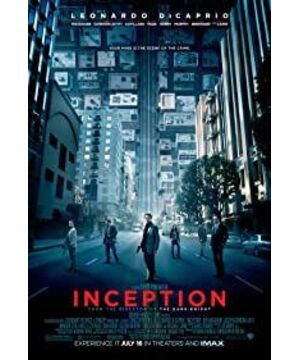After the Americans achieved undisputed great power status in the secular world, a portion of the excess libido went to two miraculous uncharted territories: outer space and inner world. The public's attention has been attracted by these two fields in turn, so after "Avatar" became popular for more than half a year, the newly released "Inception" has a tendency to climax again.
"Inception" and "The Matrix" are very similar. In a country like China where academic knowledge is not popular, the logical basis of the story can easily shock the audience and bring about an illusion of "ideological innovation". Cold food—of course, there is no accusation. Originally, thinking innovation is neither what mass culture should do, nor what it can do.
The logical basis of Inception mainly comes from the ideas of Freud and Castaneda. The former is no stranger to Chinese people, and its introduction coincides with the era of sexual repression. Freud in the United States once occupied the status of both academic and popular culture. In addition to going to bed and taking drugs, young people like to engage in psychoanalysis. Freud's theory is complex and related to the content of this film. Simply put, it emphasizes the distinction between consciousness and subconsciousness. The former is rational and sanctimonious, while the latter is emotional, full of hidden desires and complexes, which can affect the former; consciousness has Defense mechanism, the desire in the subconscious can only be entered through disguise; when the consciousness is relaxed (hypnosis, dream), the subconscious is more likely to appear. The many words of the theory: repression, defense, disguise, conscious, subconscious... constitute a considerable part of the lines between several characters. (The lines of American blockbusters are mostly simple and straightforward to the extreme, perhaps to minimize the frustration of poorly educated and non-native English-speaking audiences to ensure box office revenue.)
However, Freud only constructed this theory at the metaphorical level (there is no pejorative meaning, the so-called self-consistent theory is actually an impeccable metaphor). to be exerted. So in the film, the level of consciousness becomes the floors that go up and down with the elevator; the creation of dreams is simplified as architectural design; the edge of consciousness is the edge of the land - the beach; the so-called "invasion" means that the intruder transforms into a human figure and acts in the scene. "Defense" is when pedestrians on the street stare at you, hit you twice or even shoot at you; the level of consciousness is expressed as the proportion of man-made buildings in the scene; the most shocking thing is that the so-called secret place of consciousness is actually a password safe, And the least known thing in consciousness is the paper or object locked inside! This is reminiscent of a story about an old man in a mountain village who got up early every day to pick up cow dung. One day he overslept and didn't pick up a lump of cow dung. He came home and said to his wife: "One day I became emperor, and the whole village Cow dung is mine! No one is allowed to pick it up!" But for the audience who have been busy earning money in the city all their lives and have no time to take care of other audiences, this may be just in line with most of their life experience, and their world of consciousness may not be the case.
Freud's theory has established the basic layout, and the next step is the problem of "entry" of consciousness. In many thinkers, the so-called "entering the consciousness of others" is a kind of metaphor, which means to understand what others are thinking. However, some spiritual sects do describe this on the level of "realism", that is to say, you can enter the consciousness of the other party as if you entered a space, and you can even do something in it. Many films have made a big fuss about this state after entry, but "how" to enter often gives the director a headache. Although science is clearly and straightforwardly suitable for being photographed, it has not yet solved this problem; mysticism may have a way to go, but it is difficult to express it directly in the form of movies. In the film "Puppet Life", the passage into consciousness becomes a hole in the wall of an office. In the movie "Avatar", there are two ways to transfer and enter consciousness: high-tech and spiritual. The equipment used in the former feels like an advanced brain disease diagnostic instrument, which makes people think of brain waves or something, and is enough to fool ordinary audiences; Make people believe. "Inception" is interesting. Pulling two wires on the pulse is reminiscent of Sun Wukong's "diagnosing the pulse by hanging wire". I can't help but suspect that the director was inspired by traditional Chinese medicine.
As for the situation after entering, for example, you can control the dream state, you can continue to dream in the dream, and you will not be able to wake up if you get lost in the dream state. The dreamer needs to find a way to make sure that he is real or fake at any time, and even South American folk preparations The dream hypnotic agent...these episodes can be found in Castaneda's books such as The Art of Dreaming. A record of South American witchcraft by a professionally anthropologically trained man, Castaneda's book hovers on the borderline of academic orthodoxy and crooked, not easy to get right, but no less influential. Of course, Freud's theory also does not belong to the category of science, so the author's deepest feeling after watching the film is that labeling this film "science fiction" is really a time-travel, suspenseful, and thrilling action.
American blockbusters are always inseparable from their core values, and the secret wrapped in layers of mysteries by the hero is still the core concept of Christianity - guilt. Looking at this kind of things that cost a lot of money to make well-made core values but are old-fashioned, there is often a sigh of slaughter. Having said that, most people go to the cinema just to have a dream. The author is more serious, but the carpet may not be pure wool.
Originally published in "World Expo" 2010.18
View more about Inception reviews











